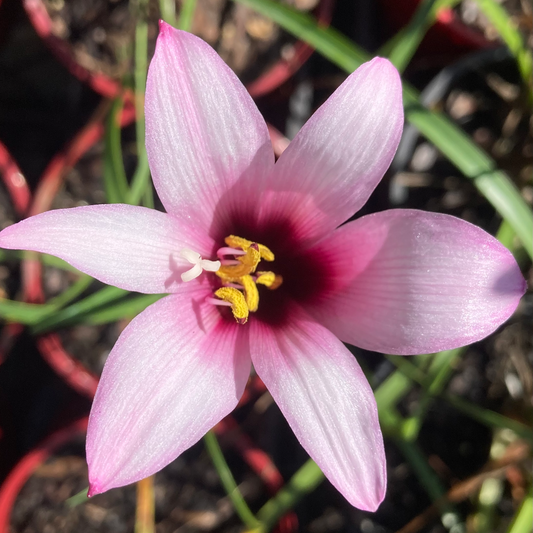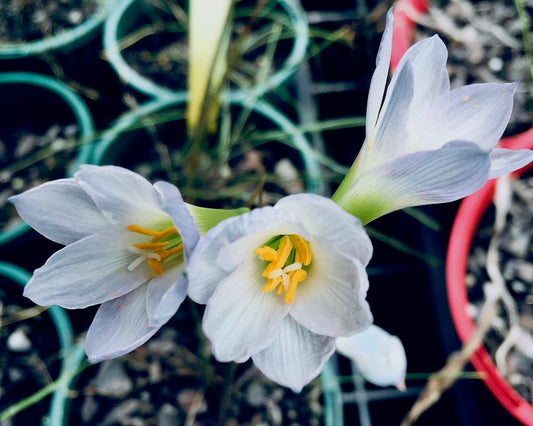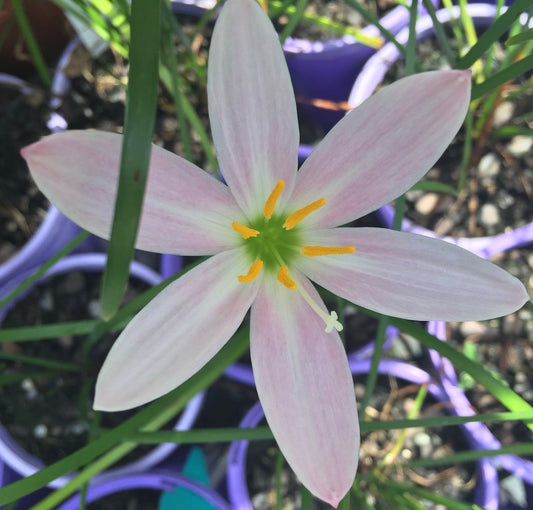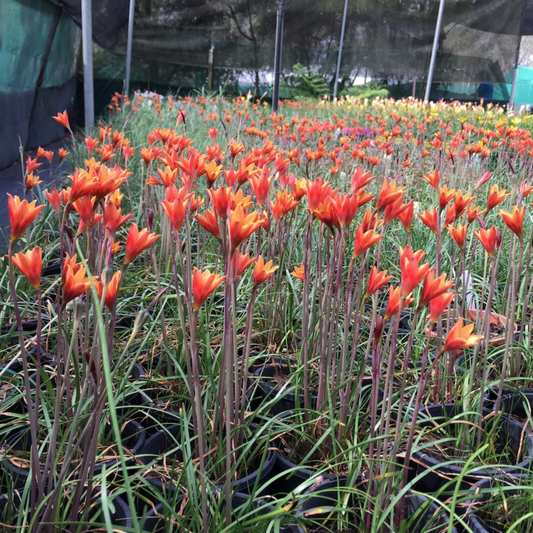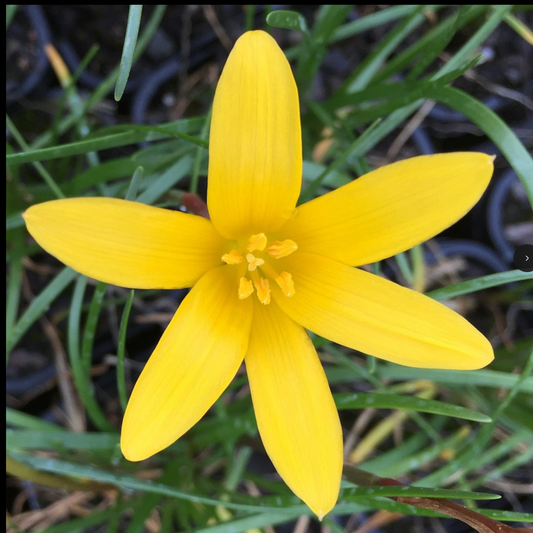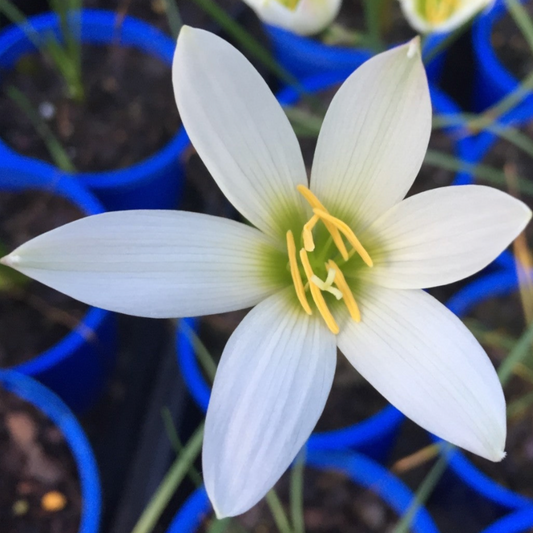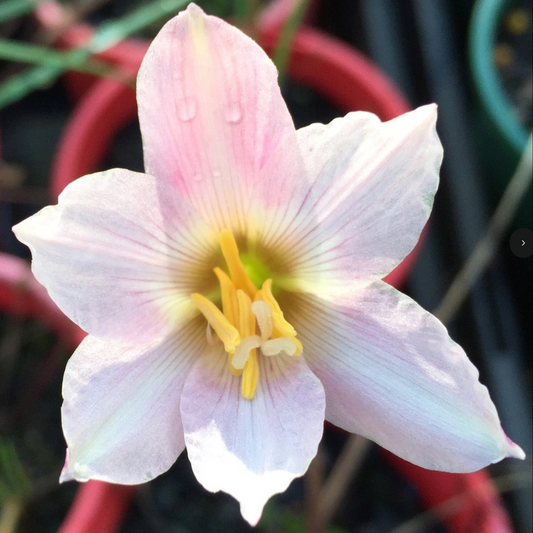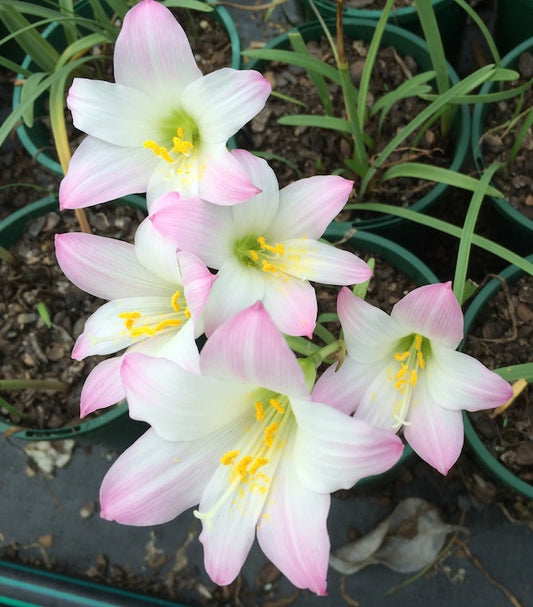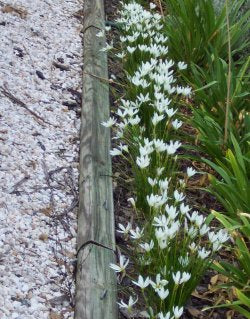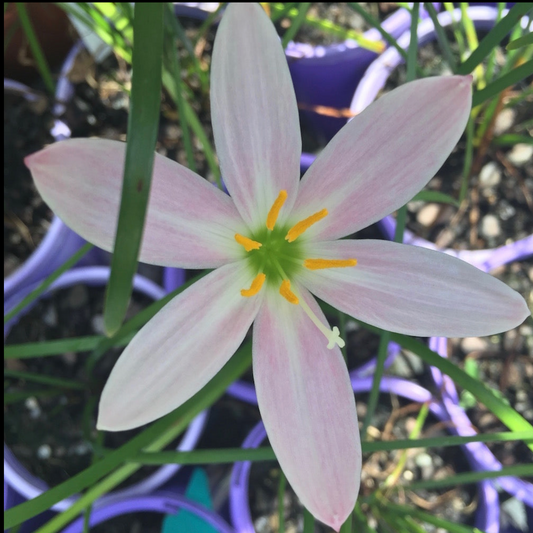Collection: Rain or Storm Lilies (Zephyranthes and Habranthus)
Rain lily refers to about 70 species of Zephyranthes and Habranthus, all of which are native to Central and South America. Both species are related and have similar flowers and foliage.
These small bulbs earned the name "rain lily" because they often flower within a few days after rain. From spring through autumn, rain lilies can produce flushes of star-shaped, crocus-like flowers that are bronze, copper, white, pink or yellow, depending on the species. Flowers of some new hybrids are in shades of peach, orange and red, and some have multicolored flowers in striped or picotee patterns. Rain lily’s easy care, broad adaptability and beautiful, starry flowers make it ideal for gardens.
In cultivation the rain lily will flower throughout the year if kept alternatively wet and dry with most blooms in summer and autumn. Each flower lasts just a day or two, depending on sunlight and temperature, but typically new flowers continually develop for several days, creating flushes of flowering.
The narrow, grass like foliage blends in well in rock gardens and can be used as borders in gardens and containers. These small perennials are among the easiest bulbs to grow and if left undisturbed will develop over several seasons into truly impressive clumps.
A new trend emerging is to inter-plant them with mondo grass to create feature flowering "garden lawns" or plant directly into grass areas. In their natural environment they are found growing in pastures amongst grasses. Often, they are used to create borders in planter boxes or small 'hedges' to define garden beds. For maximum impact grow them on mass in broad ribbons or blocks rather than scatter them throughout a garden bed. They look good throughout the year, forming a lush green grassy cover.
Rain lily bulbs adapt to seasonal dry weather by losing leaves until rainfall resumes. In the garden, soil moisture usually is sufficient for most species to retain their leaves throughout much of the year.
Rain lily grows best in rich, moist, well-drained soil with a slightly acid to neutral pH. They are not salt tolerant. Most rain lily species will flourish under full sun to part shade. Rain lily bulbs also are well adapted to growing in containers, provided plants are watered regularly to maintain adequate moisture.
Zephyranthes
During Summer, Zephyranthes produce crocus-like starry flowers and fine grassy like leaves that can be evergreen in some varieties. Flowers range in colour from white, pink or yellow, depending on the species. These bulbs multiply rapidly and after only a few years there will be many mature bulbs. Summer watering or rainfall will initiate flowering. They are pest resistant and easy to care for.
Habranthus
Most habranthus species are native to dry regions, they flower in summer within 3-4 days after rain. Unlike zephyranthes, whose flowers tend to be up-facing, habranthus flowers face outwards and are usually larger and taller than zephyranthes. Although flowering can be erratic (since it is rain dependent), each bulb can bloom several times during the summer. They are great drought-tolerant bulbs for the garden and multiply readily.
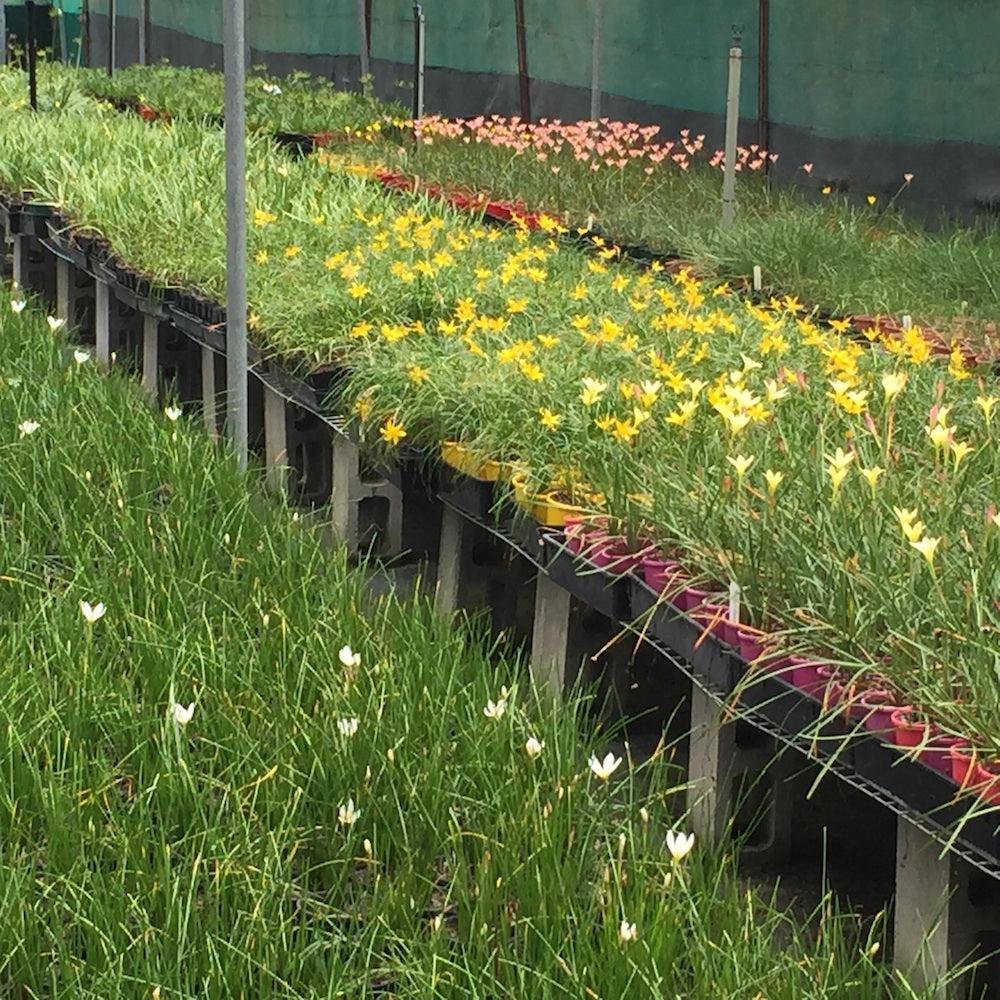
-
Habranthus Jumbo "purple base"
Regular price $6.00 AUDRegular priceUnit price / per -
Habranthus coeruleus
Regular price $6.00 AUDRegular priceUnit price / per -
Zephyranthes Grandjax - Flowering size bulb
Regular price $2.20 AUDRegular priceUnit price / per -
Habranthus tubispathus - Pack of 10
Regular price $15.00 AUDRegular priceUnit price / per -
Zephyranthes flavissima - Pack of 10 bulbs
Regular price $15.00 AUDRegular priceUnit price / per -
Zephyranthes mesochioa - Flowering size bulb
Regular price $2.50 AUDRegular priceUnit price / per -
Habranthus tubispathus var. roseus
Regular price $2.20 AUDRegular priceUnit price / per -
Habranthus robustus - pack of 10
Regular price $15.00 AUDRegular priceUnit price / per -
Zephyranthes candida - 10 bulbs
Regular price $15.00 AUDRegular priceUnit price / per -
Zephyranthes Grandjax - Pack of 10 bulbs
Regular price $15.00 AUDRegular priceUnit price / per -
Zephyranthes "Sunset" strain - pack of 10 bulbs
Regular price $31.90 AUDRegular priceUnit price / per -
Zephyranthes primulina - pack of 10 bulbs
Regular price $15.00 AUDRegular priceUnit price / per -
Zephyranthes "Sunset" strain
Regular price $3.85 AUDRegular priceUnit price / per

